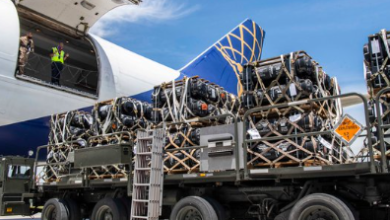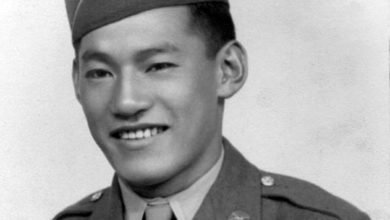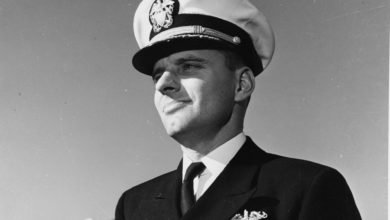Medal of Honor Monday: Navy Chief Petty Officer William Badders
Master divers have one of the most coveted titles in the U.S. Navy. They’re technical experts who can journey to dark depths of the world’s oceans to accomplish things few others can with little to no margin for error.
Navy Chief Petty Officer William Badders, a machinist’s mate, had that coveted role in the 1930’s. He and three of his colleagues took part in one of the greatest undersea rescues of all time and it earned them all the Medal of Honor.
Badders was born in Harrisburg, Illinois, at the turn of the century and entered the Navy Reserve in August 1918, just shy of his 17th birthday. He transferred to the active-duty Navy in December 1919 and eventually became a diver.
The next two decades came with several accolades for Badders:
-
- In 1926, he earned the Navy Cross during the salvage of USS S-51, a submarine that sank after colliding with a merchant steamer.
-
- In 1931, he earned the designation of master diver.
-
- He received commendations for his work during the 1928 salvage of USS S-4, a sunken submarine, and the 1932 salvage of the Japanese steamship Kaku Maru.
-
- In 1933, he received commendations for clearing the propeller of the minesweeper USS Bittern while at sea.
It was in 1939 that he earned the nation’s highest award for valor.
The Sinking of the USS Squalus
The USS Squalus was a diesel-electric submarine that sank three months after its commissioning. On the morning of May 23, 1939, the Squalus was off the coast of Maine practicing submerging at high speeds when it suffered a catastrophic valve failure. The sub quickly took on water and sank 240 feet to the bottom of the ocean.
Divers and salvage ships came quickly to try to save the men stuck in the vessel; however, it took a full day to get the dangerous rescue mission in place. Shortly before noon on May 24, the USS Falcon lowered a newly developed rescue chamber into the water. It had only been used in training up until that day.
Badders was operating the chamber. According to the Naval Institute archives, the plan was to lower the chamber via cables to the sub’s deck and seal it to one of its hatches. The rescuers would then blow the water out of the sub’s chamber, open both hatches and then pull out the trapped crewmen.
It worked. Thirty-three submariners who survived the sinking were divided into four groups and rescued over the next 13 hours.
The last perilous journey to the surface was made by Badders and his assistant, Petty Officer First Class John Mihalowski, a torpedoman. Several strands of the cable that was lifting the chamber had been severed during the previous lift. Badders and Mihalowski knew that if either of them became incapacitated, there was no way they would be rescued. But after four hours and a lot of ingenuity on their part, they were able to successfully get the remaining survivors to the top.
For his efforts in such a harrowing situation, Badders received the Medal of Honor on Jan. 19, 1940. Mihalowski and two other master divers, Orson Crandall and James Harper McDonald, also received the medal.
Aftermath
While 33 men were saved from the Squalus, 26 others stationed in the rear of the vessel did not make it out alive. All but one of their bodies were found after the sub was raised on Sept. 13, 1939. Badders helped with the salvage mission.
According to the Naval Institute archives, a Navy court determined a mechanical malfunction caused the disaster. As a result, submarine hull valves were converted to quick-closing flapper valves to prevent future tragedies.
The Squalus was decommissioned in November 1939, renamed Sailfish and recommissioned on May 15, 1940. It was decommissioned again after World War II. Its conning tower was cut away and can now be found in a park at the Portsmouth Naval Shipyard, where memorial ceremonies are held every year in May.
Meanwhile, Badders transferred to the Fleet Reserve in March 1940. He lived a long life with his wife, Lavinia, and two children. He died in November 1986 at age 85 and was buried in San Francisco National Cemetery.
This article is part of a weekly series called “Medal of Honor Monday,” in which we highlight one of the more than 3,500 Medal of Honor recipients who have earned the U.S. military’s highest medal for valor.
Source: Department of Defense
Content created by Conservative Daily News is available for re-publication without charge under the Creative Commons license. Visit our syndication page for details.




